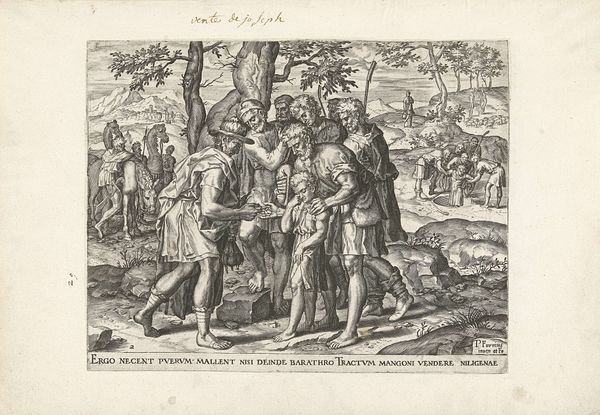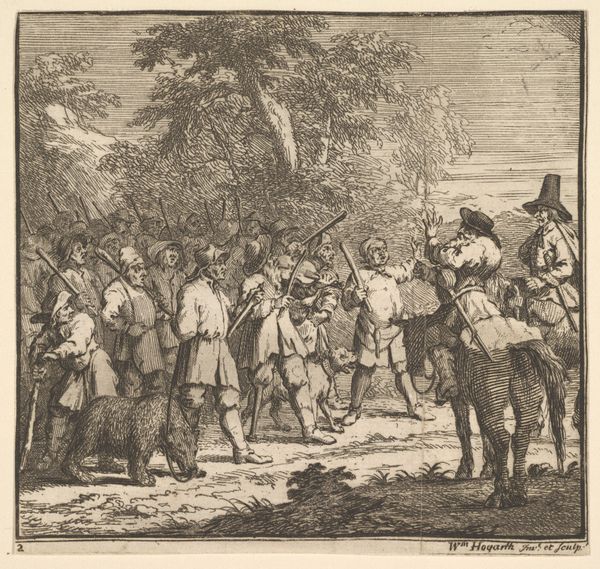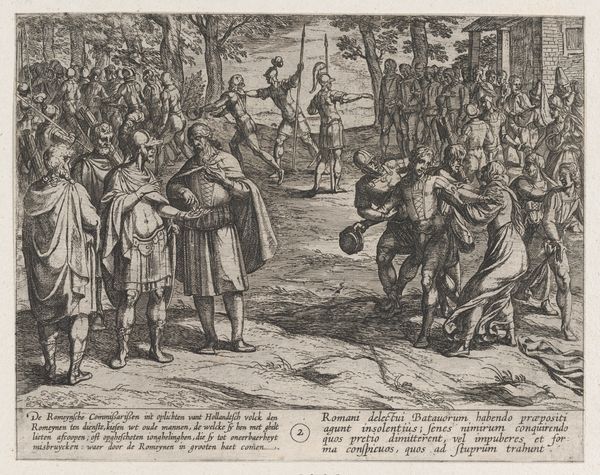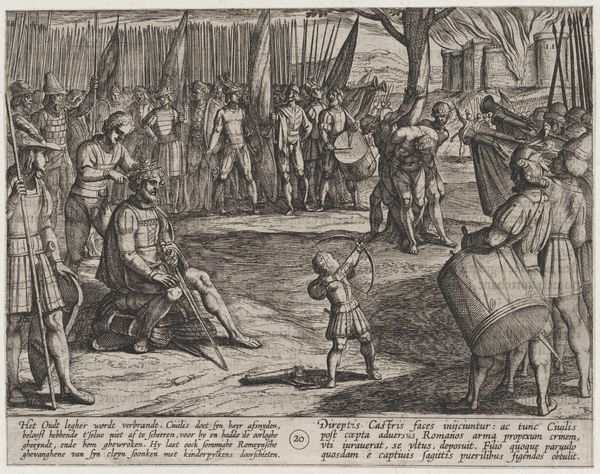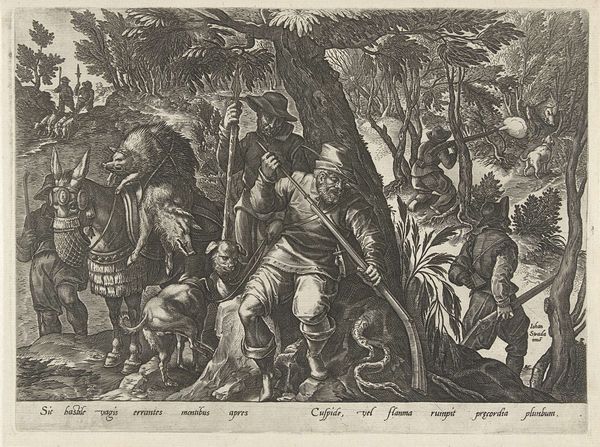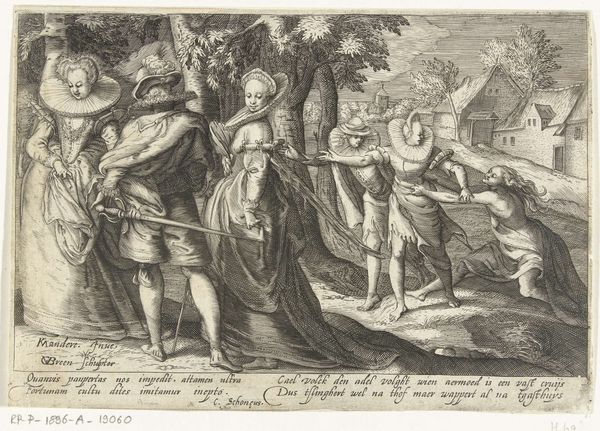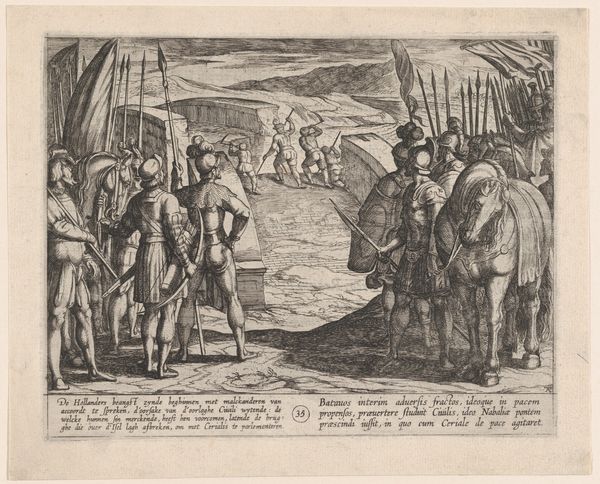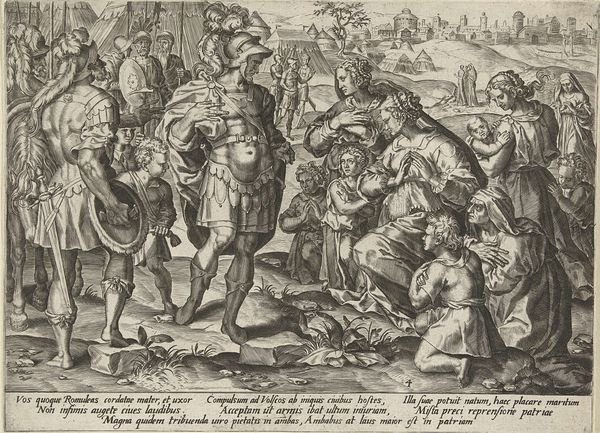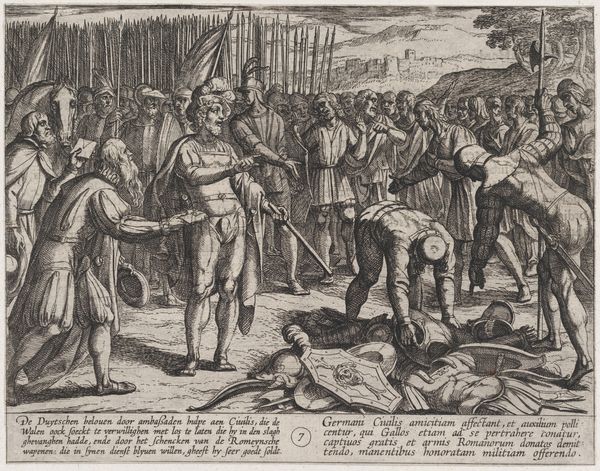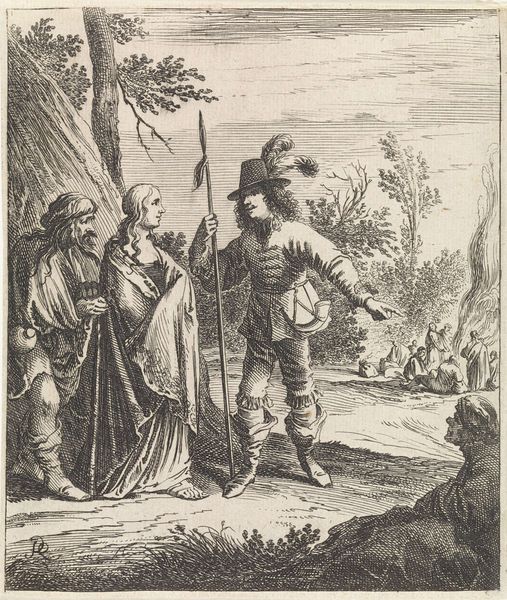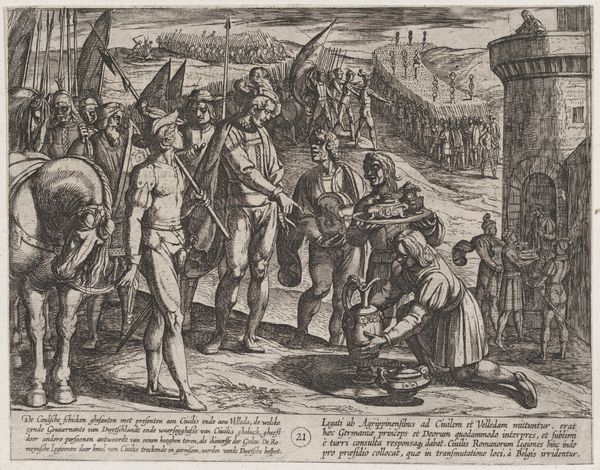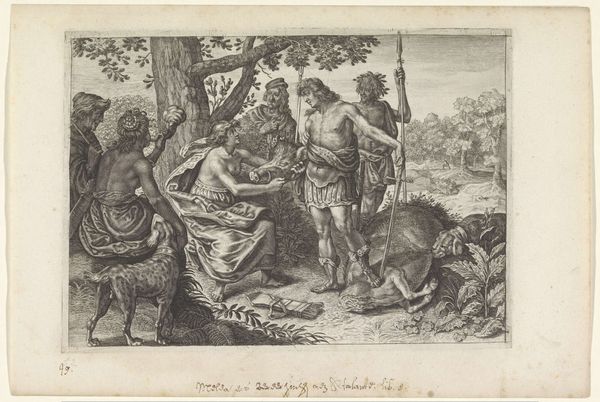
print, engraving
#
narrative-art
#
baroque
# print
#
figuration
#
genre-painting
#
history-painting
#
engraving
Dimensions: height 162 mm, width 220 mm
Copyright: Rijks Museum: Open Domain
Editor: We're looking at "Proud Soldier with a Young Woman," an engraving from circa 1585-1660, artist unknown, in the Rijksmuseum's collection. It depicts a soldier and a woman carrying what appears to be a child. It’s all so intricately rendered, almost like a detailed drawing rather than a print. How do you interpret this work? Curator: From a formalist perspective, I'm immediately drawn to the stark contrast created by the engraving technique itself. Note the delicate use of line to define form and texture; it’s a masterful exercise in chiaroscuro despite the absence of color. The composition is divided, perhaps awkwardly, between the soldier and the woman. Does this division reinforce the print's narrative content or undercut the cohesion of its design? Editor: I hadn't really considered the division itself. It almost feels unintentional. But how does the placement of the figures impact our understanding of the scene? Curator: The arrangement forces us to read the figures sequentially. The soldier strides forward, leading, while the woman, burdened, follows. Does the artist use these formal elements to critique, or simply document, this hierarchical relationship? Notice, too, how the text, etched below, echoes this sequential reading. Is this mere illustration or sophisticated visual commentary? Editor: That's a really interesting point about the reading of the figures sequentially. I hadn’t thought about that, or the positioning and how that comments on their relationship. Curator: Indeed. It raises interesting questions about how visual structure itself contributes to meaning. Focusing solely on form can open up many different interpretations. Editor: I see what you mean. By looking at the structure first, rather than the story, we can see the underlying complexity, not just the surface. Thanks for that insightful explanation!
Comments
No comments
Be the first to comment and join the conversation on the ultimate creative platform.
